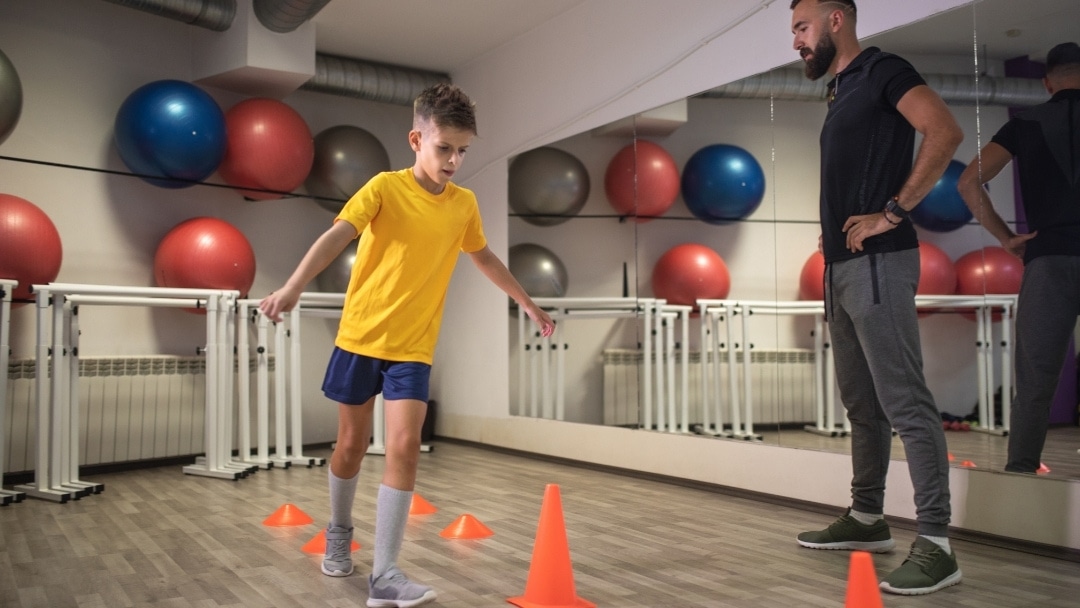Interactive Metronome addresses a neural timing deficit by improving the ability to plan and sequence motor actions. With it, it is possible to retrain the brain to focus and concentrate more efficiently.
Our brain has an internal clock that keeps timing at different intervals – microseconds, milliseconds, seconds, minutes and hours. Scientists call this “temporal processing” where a sound is detected as it reaches one ear microseconds before reaching the other ear. This timing in our brain is responsible for many daily functions we do such as:
- Waking up
- Sleeping
- Focusing
- Paying attention
- Comprehending what is read
- Remembering information
- Processing speech
- Coordinating motor movements
Certain learning and developmental disorders and conditions seem to have disrupted timing in the brain such as:
Ideally when Interactive Metronome is included with the already existing functional therapy interventions, more rapid improvement can be seen in many of the underlying issues of these disorders and conditions:
- Cognitive functioning
- Learning
- Focus and concentration
- Reading
- Speech and language
- Social skills
- Ability to filter out internal and external distractions
- Build important connections in the brain
How Interactive Metronome Works
Interactive Metronome involves wearing a special headset that emits signals and computer-generated tones. The therapy is based on regular clicking of the metronome used by musicians to assist them in keeping beat and marking time. The child or young adult is challenged to precisely match the computer’s rhythmic beat by either clapping hands or tapping feet.
A different set of tones will give different feedback as to whether the response is too early, too late or just right. The computer immediately analyzes the difference in milliseconds between the actual beat and the child or young adult’s motor response. Then the computer will average the ability to maintain focus over whatever extended period of time that takes place in that session.
Interactive Metronome takes fifteen days, listening for one hour per day over a three-to-five-week period of time. To find a practitioner and learn more information click on: www.interactivemetronome.com
Still Looking for Answers?
Visit the Epidemic Answers Practitioner Directory to find a practitioner near you.
Join us inside our online membership community for parents, Healing Together, where you’ll find even more healing resources, expert guidance, and a community to support you every step of your child’s healing journey.
Sources & References
Bartscherer, et al. Interactive metronome training for a 9-year-old boy with attention and motor coordination difficulties. Physiother Theory Pract. Oct-Dec 2005;21(4):257-69.
Blondis, T.A. Motor disorders and attention-deficit/hyperactivity disorder. Pediatr Clin North Am. 1999 Oct;46(5):899-913, vi-vii.
Cosper, S.M., et al. Interactive Metronome training in children with attention deficit and developmental coordination disorders. Int J Rehabil Res. 2009 Dec;32(4):331-6.
Attention deficit hyperactivity disorder and developmental coordination disorder: Two separate disorders or do they share a common etiology. Behav Brain Res. 2015 Oct 1;292:484-92.
Attention Deficit Hyperactivity Disorder and Motor Impairment. Percept Mot Skills. 2017 Apr;124(2):425-440.
A preliminary study of motor problems in children with attention-deficit/hyperactivity disorder. Percept Mot Skills. 2003 Dec;97(3 Pt 2):1267-80.
Koomar, J., et al. Theoretical and clinical perspectives on the Interactive Metronome: a view from occupational therapy practice. Am J Occup Ther. Mar-Apr 2001;55(2):163-6.
McLeod, K.R., et al. Functional connectivity of neural motor networks is disrupted in children with developmental coordination disorder and attention-deficit/hyperactivity disorder. Neuroimage Clin. 2014 Mar 26;4:566-75.
Piek, J.P., et al. Motor coordination and kinaesthesis in boys with attention deficit-hyperactivity disorder. Dev Med Child Neurol. 1999 Mar;41(3):159-65.
Shaffer, R.J., et al. Effect of interactive metronome training on children with ADHD. Am J Occup Ther. Mar-Apr 2001;55(2):155-62.
Slater, J.L., et al. Timing Deficits in ADHD: Insights From the Neuroscience of Musical Rhythm. Front Comput Neurosci. 2018 Jul 6;12:51.
Smith, A., et al. Evidence for a pure time perception deficit in children with ADHD. J Child Psychol Psychiatry. 2002 May;43(4):529-42.
Sonuga-Barke, E., et al. Beyond the dual pathway model: evidence for the dissociation of timing, inhibitory, and delay-related impairments in attention-deficit/hyperactivity disorder. J Am Acad Child Adolesc Psychiatry. 2010 Apr;49(4):345-55.
Teicher, M.H. Final White Paper: Effects of Brain Balance Exercisesand Interactive Metronome on Children with Attention Deficit Hyperactivity Disorderare Similar to the Effects of Stimulant Medication. Harvard Medical School, Department of Psychiatry. 2020.
Toplak, M.E., et al. Time perception: modality and duration effects in attention-deficit/hyperactivity disorder (ADHD). J Abnorm Child Psychol. 2005 Oct;33(5):639-54.
Yang, B., et al. Time perception deficit in children with ADHD. Brain Res. 2007 Sep 19;1170:90-6.
Resources
Books
Melillo, Robert. Disconnected Kids: The Groundbreaking Brain Balance Program for Children with Autism, ADHD, Dyslexia, and Other Neurological Disorders. Penguin Group, 2015.
Melillo, Robert. Reconnected Kids: Help Your Child Achieve Physical, Mental, and Emotional Balance. Penguin Group, 2015.




